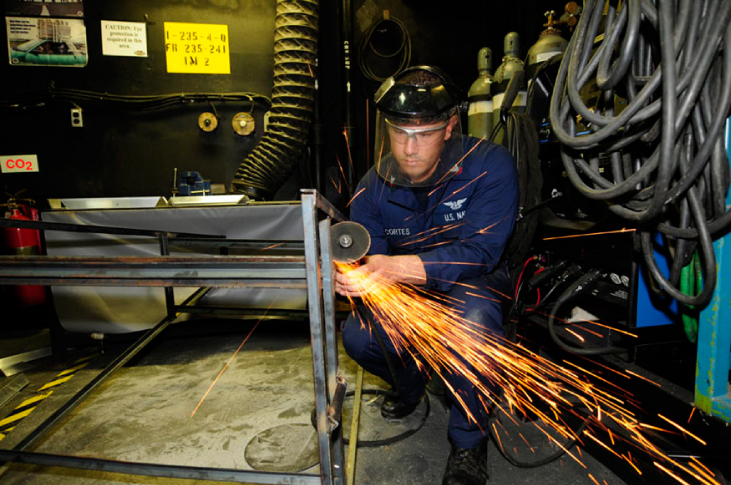| << Chapter < Page | Chapter >> Page > |
So far in this chapter, we have been working with rotational kinematics: the description of motion for a rotating rigid body with a fixed axis of rotation. In this section, we define two new quantities that are helpful for analyzing properties of rotating objects: moment of inertia and rotational kinetic energy. With these properties defined, we will have two important tools we need for analyzing rotational dynamics.
Any moving object has kinetic energy. We know how to calculate this for a body undergoing translational motion, but how about for a rigid body undergoing rotation? This might seem complicated because each point on the rigid body has a different velocity. However, we can make use of angular velocity—which is the same for the entire rigid body—to express the kinetic energy for a rotating object. [link] shows an example of a very energetic rotating body: an electric grindstone propelled by a motor. Sparks are flying, and noise and vibration are generated as the grindstone does its work. This system has considerable energy, some of it in the form of heat, light, sound, and vibration. However, most of this energy is in the form of rotational kinetic energy .

Energy in rotational motion is not a new form of energy; rather, it is the energy associated with rotational motion, the same as kinetic energy in translational motion. However, because kinetic energy is given by , and velocity is a quantity that is different for every point on a rotating body about an axis, it makes sense to find a way to write kinetic energy in terms of the variable , which is the same for all points on a rigid rotating body. For a single particle rotating around a fixed axis, this is straightforward to calculate. We can relate the angular velocity to the magnitude of the translational velocity using the relation , where r is the distance of the particle from the axis of rotation and is its tangential speed. Substituting into the equation for kinetic energy, we find
In the case of a rigid rotating body, we can divide up any body into a large number of smaller masses, each with a mass and distance to the axis of rotation , such that the total mass of the body is equal to the sum of the individual masses: . Each smaller mass has tangential speed , where we have dropped the subscript t for the moment. The total kinetic energy of the rigid rotating body is

Notification Switch
Would you like to follow the 'University physics volume 1' conversation and receive update notifications?